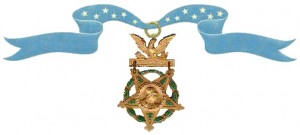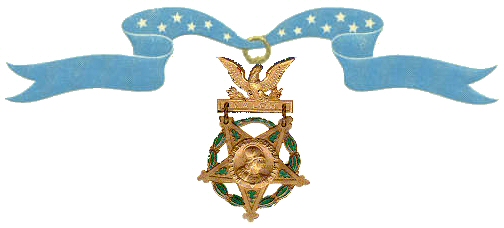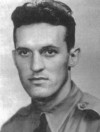Raymond H. Wilkins Medal of Honor citation
 The President of the United States in the name of The Congress takes pride in presenting the MEDAL OF HONOR posthumously to
The President of the United States in the name of The Congress takes pride in presenting the MEDAL OF HONOR posthumously to
MAJOR
RAYMOND HARRELL WILKINS
ARMY AIR FORCES
for service as set forth in the following
CITATION:
For The President of the United States of America, in the name of Congress, takes pride in presenting the Medal of Honor (Posthumously) to Major (Air Corps) Raymond Harrell Wilkins, United States Army Air Forces, for conspicuous gallantry and intrepidity above and beyond the call of duty serving with the 8th Bombardment Squadron, 3d Bombardment Group (M), Fifth Air Force in action with the enemy near Rabaul, New Britain, on 2 November 1943. Leading his squadron in an attack on shipping in Simpson Harbor, during which intense anti-aircraft fire was expected, Major Wilkins briefed his squadron so that his airplane would be in the position of greatest risk. His squadron was the last of three in the group to enter the target area. Smoke from bombs dropped by preceding aircraft necessitated a last-second revision of tactics on his part, which still enabled his squadron to strike vital shipping targets, but forced it to approach through concentrated fire, and increased the danger of Major Wilkins’ left flank position. His airplane was hit almost immediately, the right wing damaged, and control rendered extremely difficult. Although he could have withdrawn, he held fast and led his squadron into the attack. He strafed a group of small harbor vessels, and then, at low level, attacked an enemy destroyer. His 1,000 pound bomb struck squarely amidships, causing the vessel to explode. Although anti-aircraft fire from this vessel had seriously damaged his left vertical stabilizer, he refused to deviate from the course. From below-masthead height he attacked a transport of some 9,000 tons, scoring a hit which engulfed the ship in flames. Bombs expended, he began to withdraw his squadron. A heavy cruiser barred the path. Unhesitatingly, to neutralize the cruiser’s guns and attract its fire, he went in for a strafing run. His damaged stabilizer was completely shot off. To avoid swerving into his wing planes he had to turn so as to expose the belly and full wing surfaces of his plane to the enemy fire; it caught and crumpled his left wing. Now past control, the bomber crashed into the sea. In the fierce engagement Major Wilkins destroyed two enemy vessels, and his heroic self-sacrifice made possible the safe withdrawal of the remaining planes of his squadron.

